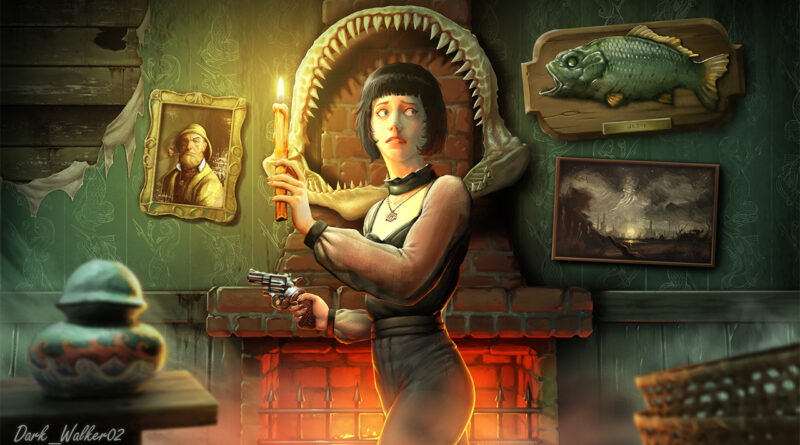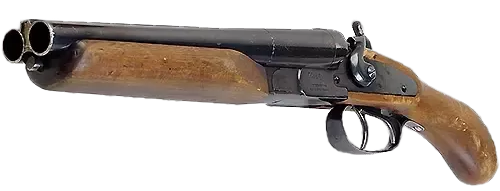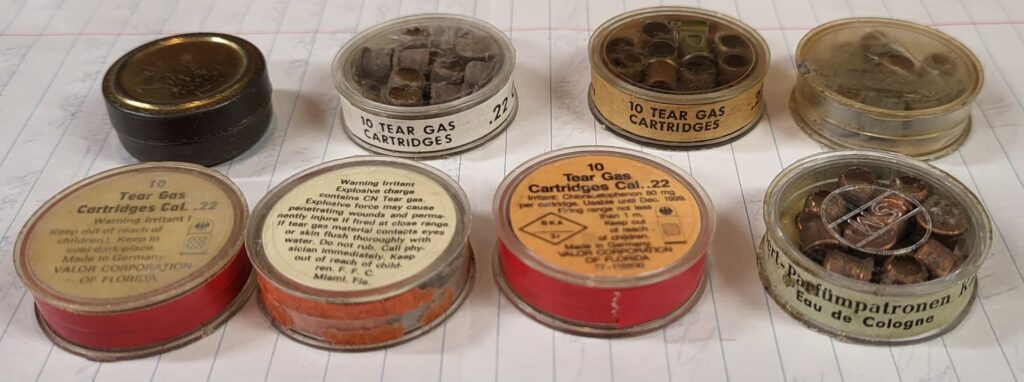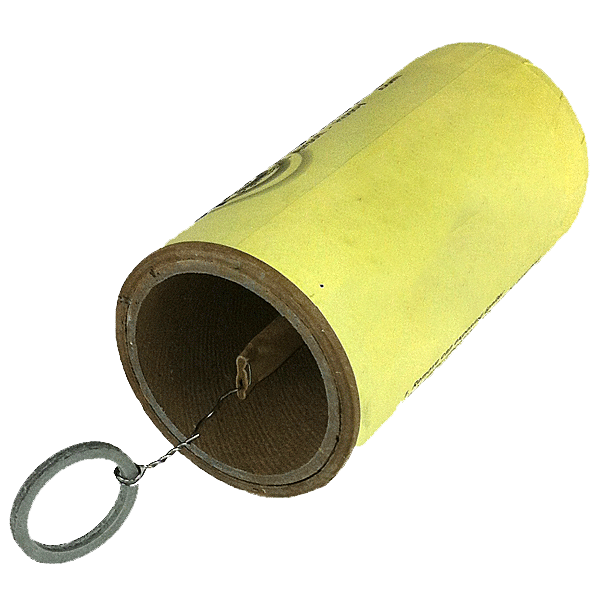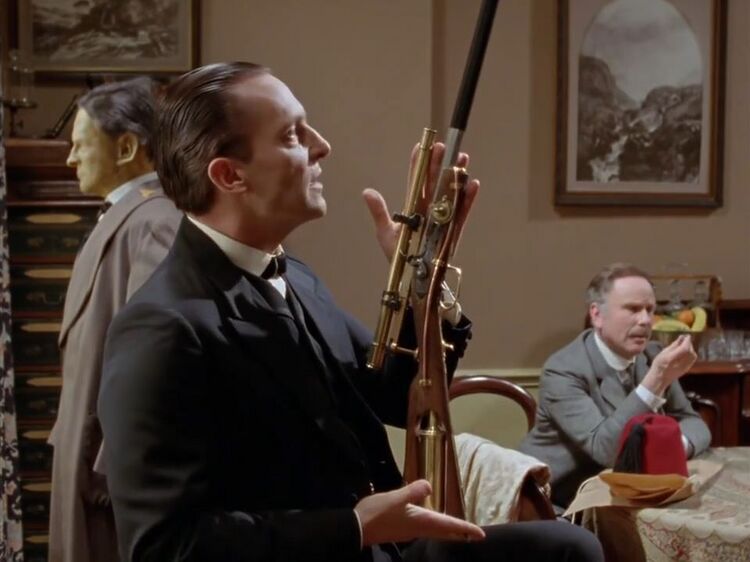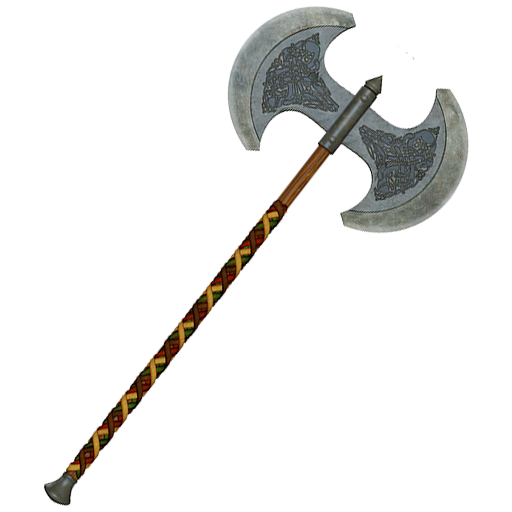5 More Great Weapons in Call of Cthulhu
Last year I covered five (really six) of my favorite weapons in the Call of Cthulhu RPG system. Since then, I’ve gotten to play more campaigns and more characters, and I’ve found some additional combat options that I think really hold their own. Whether raiding eldritch tombs or staking out satanic speakeasies, here are some effective personal defense options I think you should consider:
1. Sawed-off Shotgun
The famous double-barrel boomstick is the archetypical survivalist’s weapon, and it should have made the first article for its laundry list of positive traits. It can fire twice a round and each shot deals a whopping 4d6 damage at point-blank range, which will demolish most threats (otherworldly or not.) For longer ranges or armored targets, buy some slugs to deal 1d10+6 damage from 50 yards out. The rulebook notes that ‘shorties’ were commonplace and legal in the 1920s, to the point that their listed price tag is literally free. Plus shotguns have the highest base stat at 25%, meaning you won’t need to spend as many points to become truly proficient. Considering the fact that it deals damage on par with rarer, much-more expensive guns, its damage output, concealment, and price tag make it a solid choice for any adventurer of any possible background.
(The other all-rounder who should have made the last list is the .45 Automatic pistol. Lethal, reliable, affordable, silenceable, widely-available; if you had to pick a single gun to use for the rest of your Call of Cthulhu career, make it one of these two.)
2. Poisoned weapons
Poison is an under-used weapon buff in most investigator’s arsenals, mostly because it’s not particularly well supported in the base rules. The Keeper’s Rulebook has access to several poisons, but no details for applying it to weapons. (Though the description for curare, my favorite poison available, states it’s historically used to coat arrows.) To get more in-depth options, you’ll need to buy the Cthulhu Dark Ages setting guide. It details the mechanics for poison-coated weapons, how to obtain/resupply ingredients, and an expanded roster of options. (Spurge and wolfsbane are my favorites.) Not only does poison massively augment your damage, it also afflicts enemies with tons of great side effects, from paralysis to blindness to vomiting. With poison, even a switchblade or arrow can suddenly deal damage far above its usual weight class. The skillpoint cost into Chemistry is pricy, but the utility and combat benefits are more than worth it.
3. Tear Gas Bullets
Ever since I found the alternate ammo types in Investigator Weapons Vol. 1, I can’t resist trying them out with any compatible weapons. And the most versatile by far are tear gas rounds, usable with any revolver or shotgun. When fired, they create a cone-shaped cloud that halves attack and Spot Hidden checks through it (great for escapes), while also blinding and stunning anyone within the blast radius who doesn’t pass an extreme CON save. They don’t deal any damage, but their ability to incapacitate is second-to-none. Whether zoning a hallway, targeting multiple incoming enemies, or stunning a teammate who’s gone temporarily insane, they succeed in many ways a regular bullet wouldn’t, and I have repeatedly found myself grateful I had access to both from a single firearm.
4. Smoke Grenades
So these aren’t actually in any sourcebook, your Keeper is going to have to sign off on some homebrew mechanics for how they function. But smoke grenades are actually incredibly easy to jury-rig with household items, especially in 1920 when celluloid plastic was used in practically everything. You might need to justify it with some points in Mechanical Repair or Science (Chemistry), but having an essentially free way to blind roomfuls of enemies (or lone guards) can help keep you and your teammates alive in dicey situations.
5. Col. Moran’s Air Rifle
This one’s right in the core 1920s rulebook, and one of the odder firearms available. Taken from the Sherlock Holmes canon, this is a silenced rifle that uses revolver ammo, deadly silent in application but with a commendable 1d8+1d6+3 damage. I find silenced weapons extremely valuable in CoC due to the investigative focus, and this is probably the highest-damage option you can get in that category. Even better, cinematic portrayals of this gun have always shown it capable of being disassembled and its various parts hidden within the user’s clothes and cane, due to its intended design for assassination. So while you’ll need a few seconds to get yourself ready, walking around with an an entire rifle hidden in your outfit leaves you with an unmatched level of hidden firepower at your beck and call.
BONUS #6. Roman Greataxe
I do not actually recommend using a Roman Greataxe. Not only did it never historically exist, but Call of Cthulhu is a terrible system for melee specialists and you’re going to die extremely fast. However, if you insisted on wanting a high-damage melee build, I think this obscure weapon is your best pick for several odd reasons. It hails from Cthulhu Invictus, a hellenistic setting that adds a few more combat mechanics to its melee weapons, including parrying and weapon length. The ability to parry attacks will definitely help you survive, and the greataxe is one of the best melee weapons at doing it. But the real boon comes from its status as a ‘long’ weapon. In melee combat, long weapons get to go first even if their owner has lower DEX, and their opponent must pass a Dodge check to get within range to attack with their shorter weapon. Considering most cultists/monsters are wielding daggers or claws, and almost never have points put into Dodge, this is surprisingly effective at “stunlocking” them while also dealing an insane 2d6 damage per hit. The primary problem is that if they do manage to roll well and shrink the gap, now you must pass a Dodge check to return the combat range to your favor. So be sure to pump that Dodge during character creation. And start thinking now on how the hell you’re gonna justify this weapon in any other time period. (Historical reenactor?)
Again, I want to reiterate that Call of Cthulhu is not really a combat simulator. You should be striving to avoid violence whenever possible, but that means when it does inevitably rear its head, you want to have the tools to escape with your life. You’ll notice a lot of these are focused on stunning, debuffing, or disorienting your enemies, because I find avoiding combat is often more valuable a skill than being good at it when the time finally comes. As famed eldritch investigator Sun Tzu once said, “the epitome of martial excellence isn’t winning every battle, but winning without fighting.” And that goes double when your opponents are unfathomable ancient horrors who drive you insane with the merest glance!
